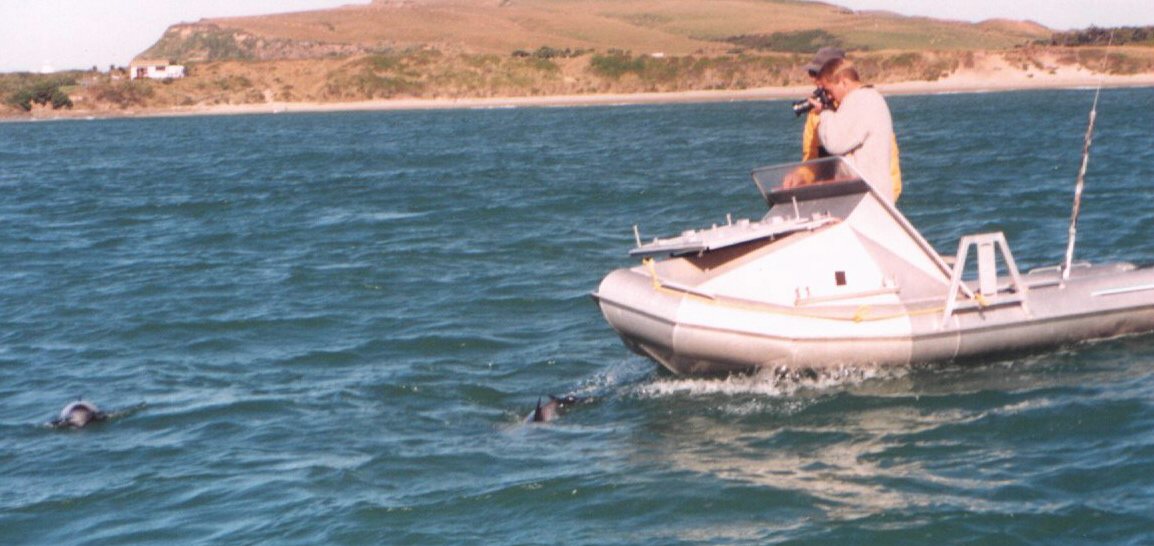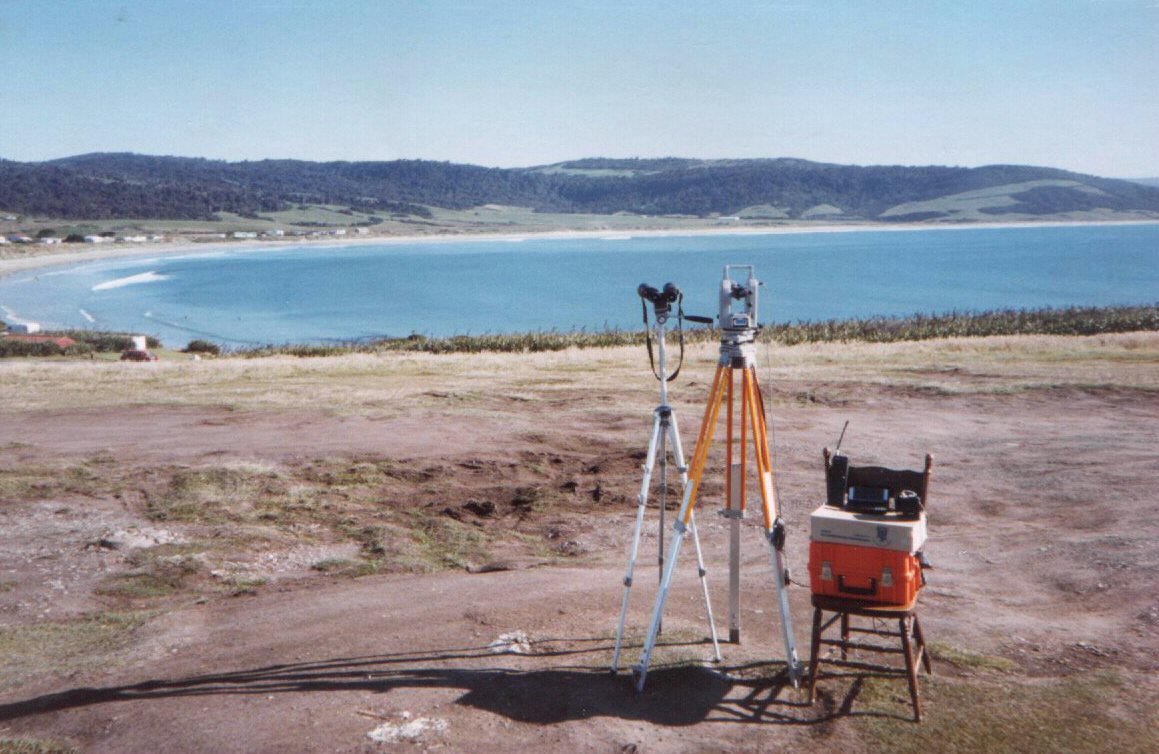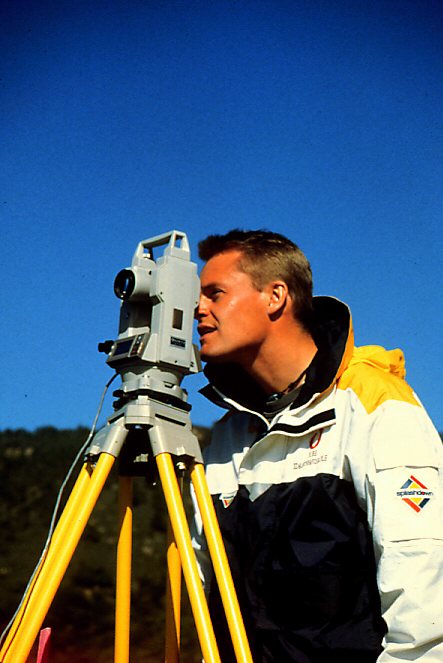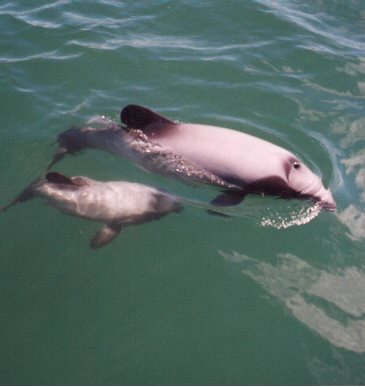
Abstract
Few studies have integrated research on the ecology and population biology
of dolphins with studies of the potential impacts on them. The aims of
this study were to: 1) photographically identify the population of Hector’s
dolphins (Cephalorhynchus hectori) using Porpoise Bay and estimate population
size; 2) present a method for testing association patterns of social mammals;
3) assess the social organisation of Hector’s dolphins in Porpoise Bay;
4) document spatial and temporal habitat utilisation of dolphins in Porpoise
Bay; 5) assess the impact of "dolphin-tourism" on Hector’s dolphins at
Porpoise Bay and 6) advise on guidelines under which such tourism should
operate.
| Seventy-nine boat-based photographic surveys were conducted throughout two summers resulting in a population size estimate of 50-65 Hector's dolphins frequenting Porpoise Bay. Resightings of identifiable dolphins indicated a partly resident population that is visited occasionally by members of neighbouring populations and/or by individuals with larger home ranges. There was no evidence of group segregation by sex or age-class. |  |
A new method for testing association patterns of social mammals is presented
and used to describe the social structure of Hector's dolphins in Porpoise
Bay. The test indicated that dolphins associated with little preference
towards each other over the course of each season and throughout the two
seasons. No individual pairs were significantly associated in both seasons
(mother/calf pairs were excluded in the analysis).
| To quantify reactions caused by boats and swimmers, Hector's dolphins
were tracked via theodolite on 61 days throughout the study. Swimmers were
present within 200m of dolphins during 11.2% of total observation time.
Swim-with-dolphin attempts had a "success" rate of 57.1% - meaning that
the dolphins stayed within 200m of the swimmer(s) for more than five minutes.
The theodolite study indicated that boats were present in the bay a total
of 12.4% of total observation time.
Dolphins showed significant attraction towards dolphin watching boats between the tenth and fiftieth minute of dolphin-boat encounter where after the dolphins lost interest. There was evidence that dolphins approached the boat less frequently than expected as the duration of encounter increased beyond about 70 minutes. Furthermore, dolphins formed tighter pods when the boat was present in the bay or when swimmers were present. |

  |